Tour throughout Korea
ØcA[
Tour throughout Korea ØcA[ |
Korea, charming country
Gwanghwamun plaza, Sejongno õ»å©çLªé¢@H
Pavilion of blue tiles
The Cheongwadae or Blue House is the executive office and formal residence of the South Korean head
of state, the President of the Republic of Korea and located in the city Seoul. The Korean name literally
translates to "pavilion of blue tiles." The Blue House is, in fact, a complex of buildings, built largely in
the traditional architectural style with some modern elements.
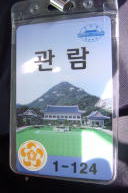

(L) A visitor's tag (M) Security staff members are carefully checking the number of people.
(R) A bridge connecting the garden area to the Reception Center
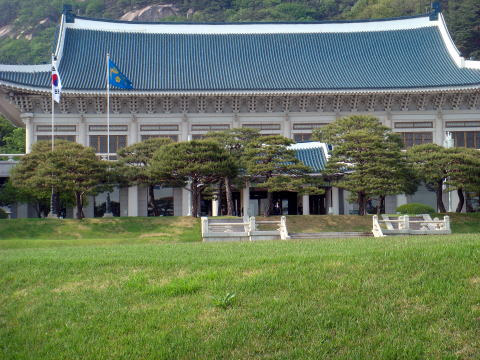
(L) The Blue House is located at the foot of Bukhansan in Seoul, South Korea.åÌ{
(R) The picture shows the gate to the Seoul city. We usually look at the Blue House from another side.
Changdeokgung Palace
Changdeokgung Palace is set within a large park in Jongno-gu, Seoul. It is one of the "Five Grand Palaces"
built by the kings of the Joseon Dynasty. The literal meaning of Changdeokgung (¹úº{) is "Palace of Prospering
Virtue.
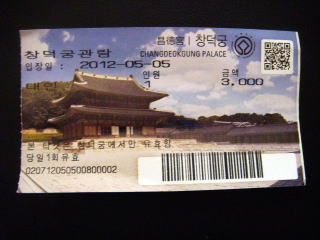
(L) An admission ticket to the Chang Deok Gung Palace »¿{ @(R) Donhwamun, the main gate Ö»å
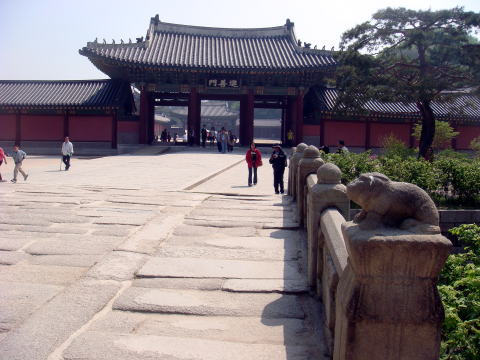
(L) Jinseonmun@iPå (R) Sukjangmun lÍå
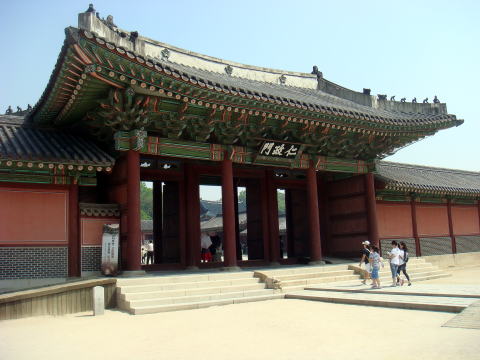
(L) Injeongmun@må@(R) Injeongjeon, Main hall ma This is the hall where the king received his court and foreign envoys.
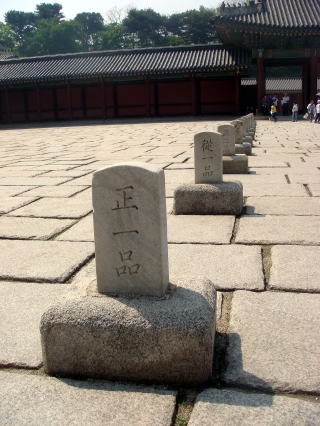
@
(L) Front yard of Injeongjeon (R) Underneath Injeongjeon throne hall roof and corridor of the Changdeokgung Palace
Injeongjeon ( interior ), Changdeokgung
Gyeongbokgung Palace
Gyeongbokgung Palace or Gyeongbok Palace, is a royal palace located in northern Seoul. First constructed in 1394
and reconstructed in 1867, it was the main and largest palace of the Five Grand Palaces built by the Joseon Dynasty.
The name of the palace, Gyeongbokgung, translates in English as "Palace of Shining Happiness." Nearly destroyed
under the rule of the Japanese government in the early 20th century, the walled palace complex is slowly being
restored to its original form prior to destruction. As of 2009, roughly 40 percent of the original number of palace
buildings still stand or are reconstructed.
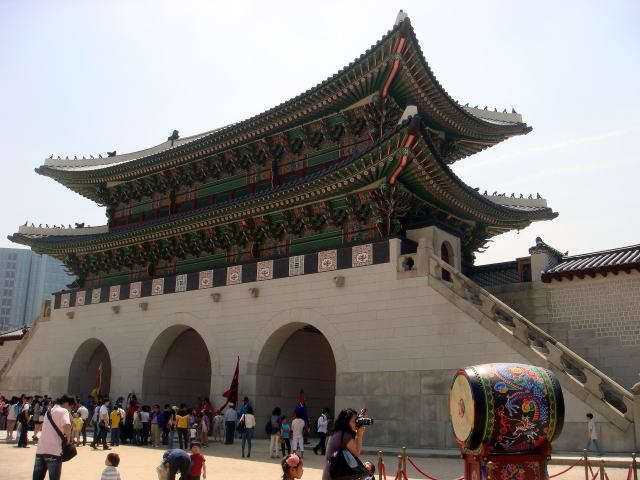
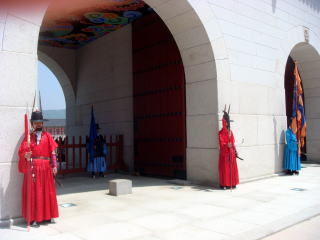
Main gate of Gyeongbok Palace, Gwanghwamun õ»å

A guard mounts at Gwanghwamun qºðã


(L) Gangnyeong-jeon (R) Chimneys in Amisan garden
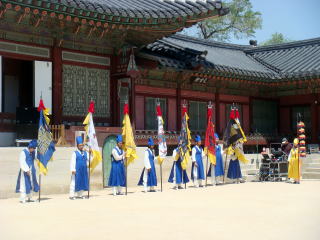
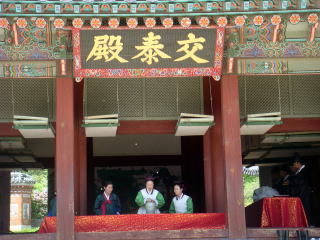
Gangnyeong-jeon and an event
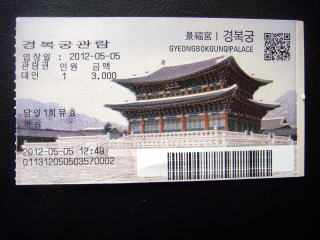
(L) An admission ticket to the Gyeongbokgung Palace (R) Geungjeong-jeon iû{AÎa

(L) Staff members dressed with 'Chima jeogori' are greeting to visitors to the Palace. (R) Gyeonghoe-ru Pavillion cïO
Charming Korean women will welcome you at a souvenir shop.
Seokguram
The Seokguram Grotto is a hermitage and part of the Bulguksa temple complex. It lies four kms east of the
temple on Mt. Tohamsan, in Gyeongju, South Korea. The grotto overlooks the Sea of Japan and rests 750
meters above sea level. In 1995, Seokguram was added to the Unesco World Heritage List together with
the Bulguksa Temple. It exemplifies some of the best Buddhist sculptures in the world.
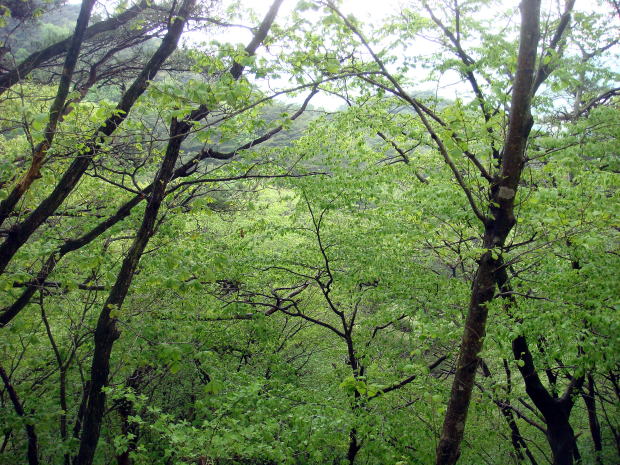
(L) Stone image of the Buddha ( World Heritage Site ) (R) Greenery of Toham Mountain
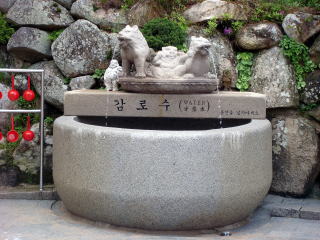
Holy water fountain and Seokguram Grotto in Gyeongju, South Korea
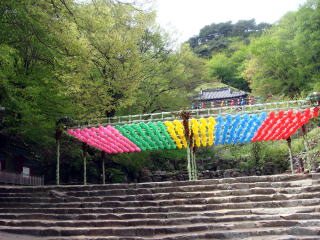
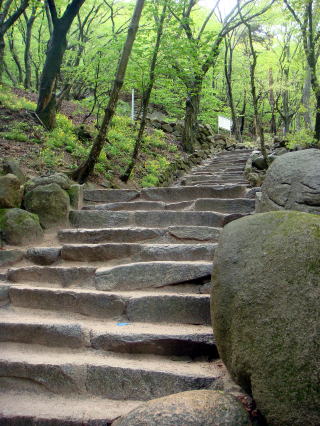
The entrance to the Seokguram grotto. The rotunda is covered by a grassy hill on the slope of Toham Mountain.

The main gate and an entrance path to Seokguram Grotto
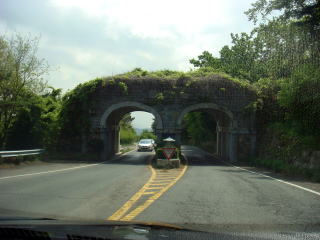
A winding road climbing up to the Seokguram grotto
Admission ticket to Bulguksa
Bulguksa is a head temple of the Jogye Order of Korean Buddhism in South Korea. It is home to seven National
treasures of South Korea, including Dabotap and Seokgatap stone pagodas, Cheongun-gyo (Blue Cloud Bridge),
and two gilt-bronze statues of Buddha. In 1995, Bulguksa was added to the Unesco World Heritage List together
with the Seokguram Grotto, which lies four kilometers to the east.The temple is considered as a masterpiece of
the golden age of Buddhist art in the Silla kingdom.
BulguksaTemple: Jahamun, Cheongungyo and Baegungyo@àåAãiÌ16iª_´AºiÌ17iªÂ_´
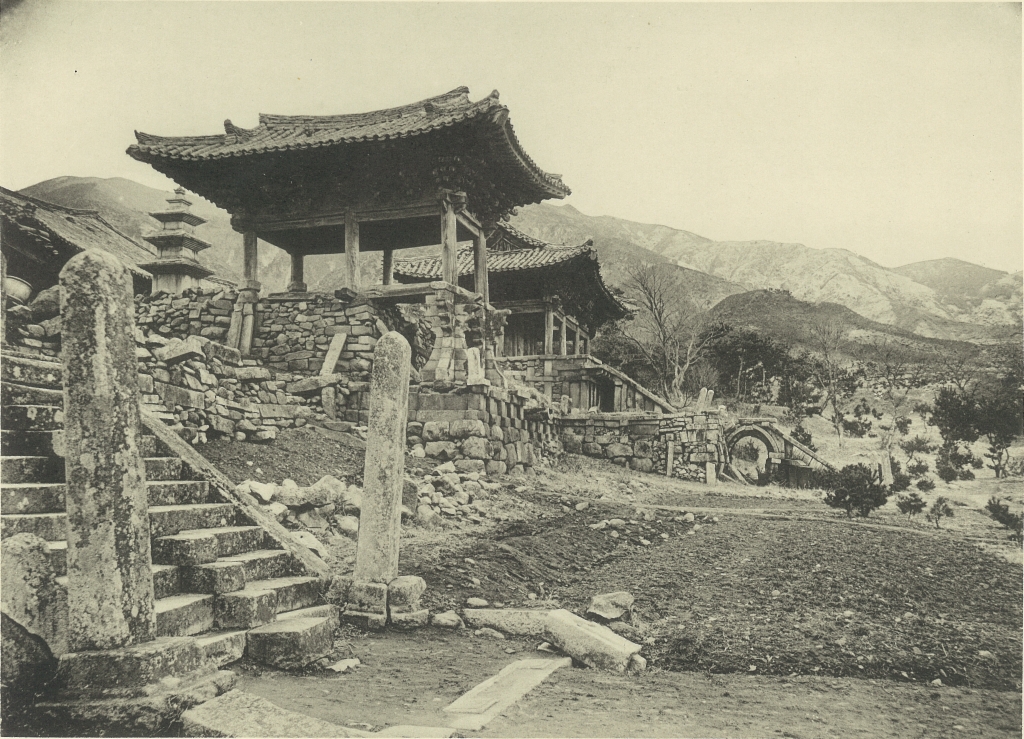
(L) This picture of BulguksaTemple was taken in 1914. The present temple was rebuilt in 1970s.
(R) The gate sign of BulguksaTemple

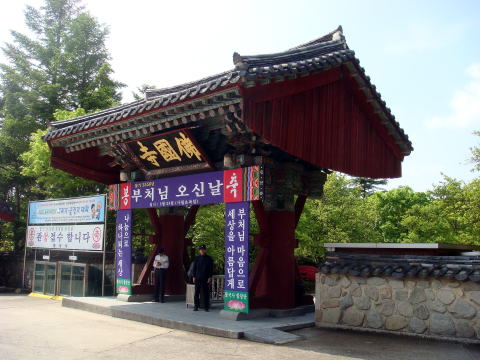
(L) Ticket office of the temple (R) Main gate to BulguksaTemple
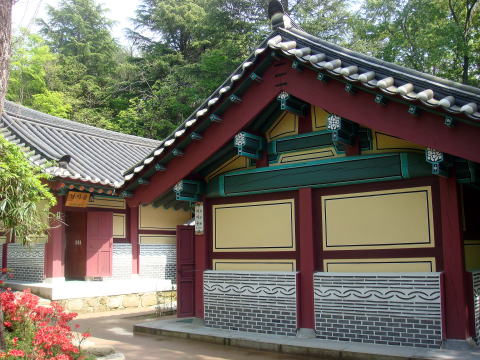
(L) A clean toilet in the precinct of BulguksaTemple (R) Approch to the Temple
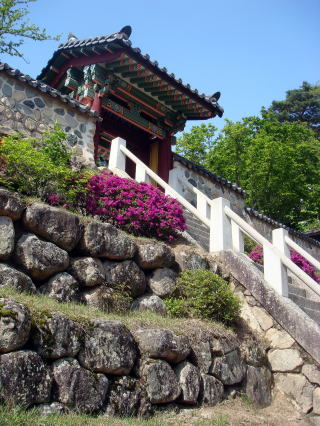
(L) A sharp stone step to BulguksaTemple
(R) Well maintained Japanese-style garden in the precinct of BulguksaTemple.
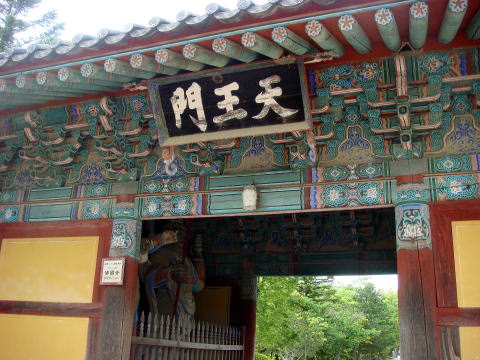
(L) V¤å (R) ϹaGwaneumjeon
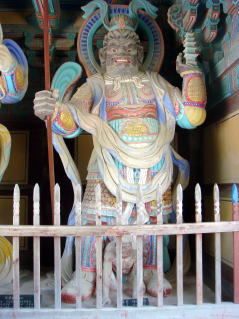
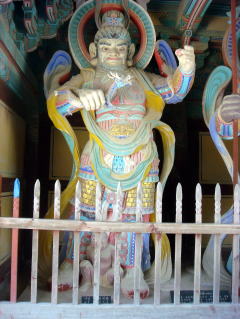

V¤ålV¤
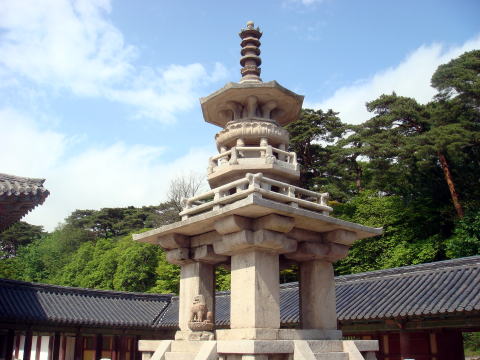
Seokgatap, a stone pagoda ½ó
BulguksaTemple and mountain range in the background
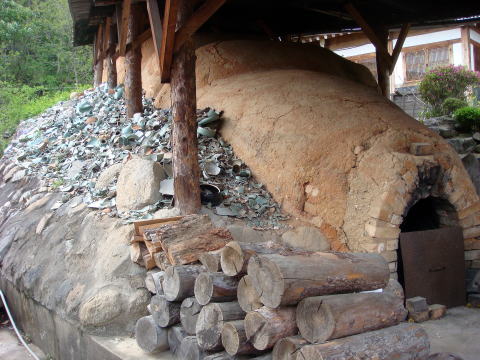
A porcelain factory and a show room at Gyeongju, South Korea
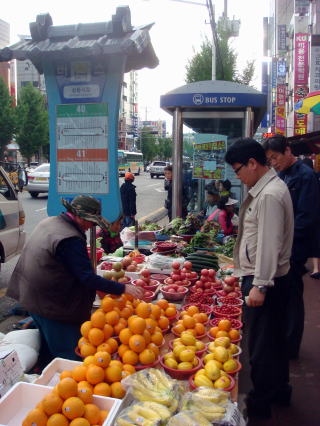
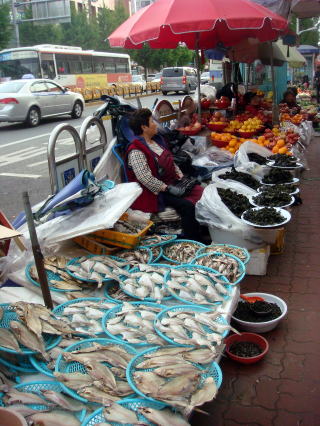
A sidewalk vendor in front of the Gyeongju railway station
Busan
Busan, formerly spelled Pusan, is South Korea's second largest metropolis after Seoul, with a population of
around 3.6 million. The Metropolitan area population is 4,4 million as of 2010. It is the largest port city in
South Korea and the world's fifth busiest seaports by cargo tonnage.

Busan Fish Market is the largest fish market in South Korea. It adjoins the South Harbor in Busan. R¤¯sê
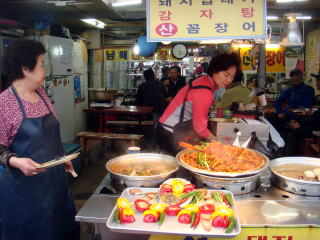
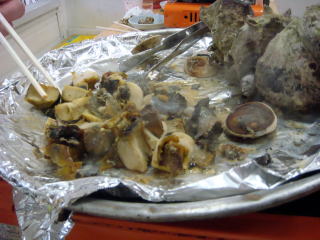
(L) Many food-shops in the Fish Market. It serves a various sea product, including a cooked turban shell.
(R) An admission ticket to Busan Tower
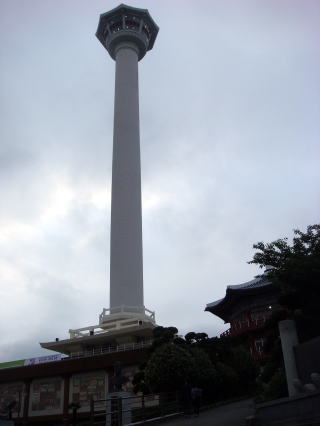
(L) Busan Tower is a 118 meter high. (R) South Harbor of Busan viewed from the Busan Tower.
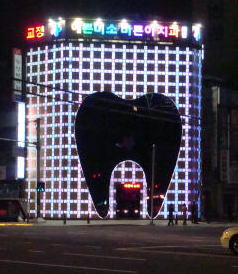
(L) Dental Clinic at Busan (R) Condominiums on the hill of Busan
\E
i{Í©N¤©Ì¤{Å Á½ªAú{éɹ³ê½ãÉ©NÂ{̡ɪu©ê½Båدª³ê½
ãÍA~nÌêÉØå̯@i¢äjªu©êÄ¢éB»ÝÍi{ÌSÉ 1867NÉijê½Îå
âÎaÈǪ»¶µÄ¢éB
cB
ÎAÁi\bNjÍcBsÉ é§³âÕBfÜRÌ[É éB³XuΧvÆÄÎêÄ¢½ªAuÎAÁvÆ
ÄÎêéæ¤ÉÈÁ½ÌÍú{¡ãÈ~Å éB1995NÉÎAÁ©çñ4LÙǣ꽧ÆÆàÉ¢EâY
Éo^³ê½BÎAüûÍKXÂÅ¢íêAàÉüêÈÈÁÄ¢éB»Ì½ßOº©çKXzµÉΧð
qÏ·éB
§ÍcBsÉ é§³@Bا³EÌÅå¨ÍÌ@Å éB Å·ú̪¢IÉÍ60ÙÇÌ@Å\¬³
ê½B¾@Éæ駳e³ÌÛÉpÆÈÁ½BíÎâÎÐðoÄÄACªJèÔ³êA1973NÉϹaÈǪ
ijê½B§ßÉÍAV èJíH|AÂ¥A¥A]yíÈÇÌH[ª§¿ÀñÅ¢éBcBwOÌà¹ÉÍ
AìØAÊÀÈÇÌIV¤ª§¿ÀñŨèAØÈçÅÍÌiÉGêé±ÆªÅ«éB
R
RLæsÍAåدìÉÊu·éBÎnC¬ÉʵAéç©N¼Æú{ÆðÔðÊÌvÕƵÄ
h¦Ä«½`pssÅ éBñs\EÉ®ØæñÌssƵÄA¡,oÏ, ¶»ÌÊÅdvÈððSÁÄ«½B
CÉ ÓêéØÅåÌCNsêÍK©Å éB
ú{êð§^NV[FçéüA011-578-3366iRj
Korea
Korea 2009
Hotels in Korea
Railways in Korea
Korean tours
Korea 2012
ØcA[
2012N5Ê^Be¨æÑ·M@ãwm@{{
This Web site is link-free.
This information was provided by the Smokefree Hotel and Travel.
Thiis article was written and photpgraph was taken in May 2012,
by Junhaku Miyamoto, M.D., PhD.
Copyright (C) 2012 Junhaku Miyamoto, PhD. All right is reserved.
Hotels in Korea 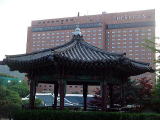 |